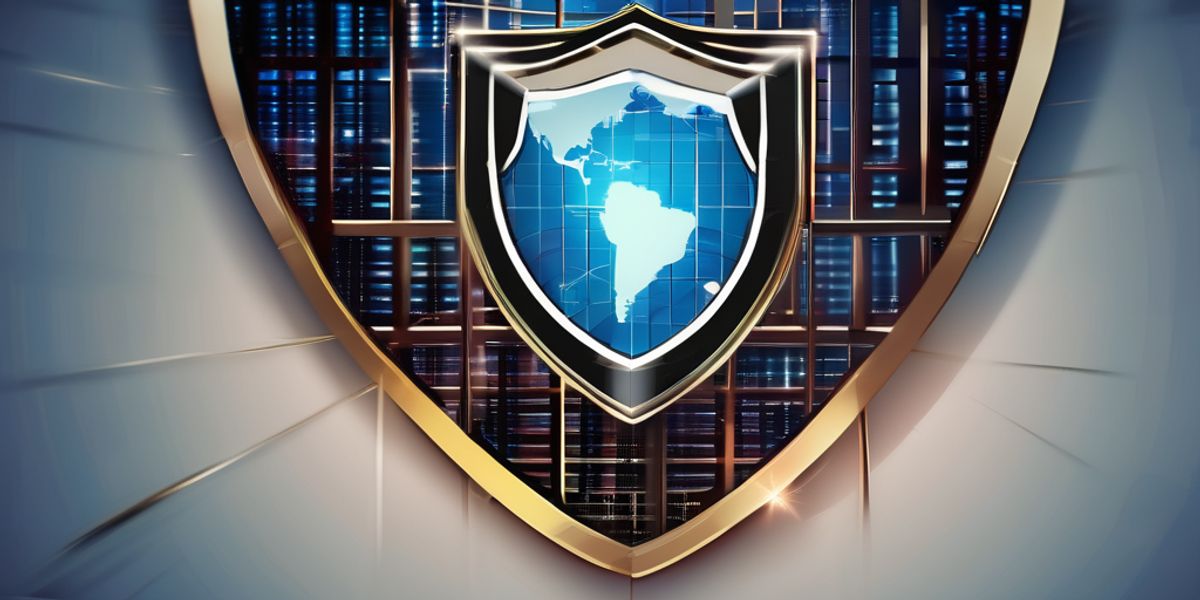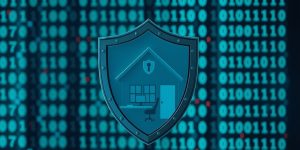In the ever-evolving digital landscape, safeguarding your online presence through continuous website data protection is not just a best practice; it’s a necessity. From implementing robust security protocols to optimizing hosting environments, this article explores the essential steps necessary to protect your website from cyber threats, maintain customer trust, and ensure compliance with data protection regulations. Let’s delve into the key strategies that will help fortify your website’s defenses and preserve your digital integrity.
Key Takeaways
- Implementing SSL certificates and conducting regular security audits are foundational steps in protecting user data and instilling visitor confidence.
- Real-time threat detection and effective incident response plans are critical in minimizing the impact of cyber threats and maintaining operational continuity.
- Compliance with data protection regulations is imperative to avoid legal repercussions and safeguard sensitive customer information.
- Integrating social media into your website must be done with a focus on security to balance user engagement and data protection.
- Choosing a hosting provider with advanced security features and practicing continuous security monitoring is vital for a secure online presence.
Implementing Robust Security Protocols
The Role of SSL Certificates in Data Encryption
Secure Socket Layer (SSL) certificates are the bedrock of internet security, providing a secure channel for private information to travel across the otherwise insecure web. SSL certificates encrypt data between the user’s browser and the server, ensuring that sensitive information such as personal details and passwords remains confidential during transmission.
The implementation of SSL certificates is a multi-step process that involves the generation of a public and private key pair, the submission of a certificate signing request (CSR) to a Certificate Authority (CA), and the installation of the certificate on the web server. This process culminates in the activation of the padlock and the https protocol, indicating a secure connection.
By prioritizing website security through the use of SSL certificates, businesses can safeguard against unauthorized access to sensitive data. This not only protects user information but also enhances user trust, which is essential for maintaining credibility and fostering a secure online environment. Moreover, search engines like Google prioritize secure websites in their rankings, making SSL implementation beneficial for SEO as well.
Regular Software Updates and Security Audits
To maintain website integrity, it is imperative to implement a regimen of regular software updates. These updates are not merely about enhancing functionality; they serve as a critical defense against emerging threats. By staying ahead of potential vulnerabilities, you ensure that your website’s defenses evolve in tandem with the ever-changing cyber threat landscape.
Security audits are equally essential. They act as a diagnostic tool, revealing weaknesses before they escalate into breaches. A comprehensive audit examines all aspects of your digital presence, providing valuable insights that drive security enhancements. This process is a continuous cycle of evaluation and improvement, fortifying your website’s resilience against cyber attacks.
Collaboration with cybersecurity experts can significantly bolster your security strategy. These professionals bring specialized knowledge that can help in identifying and mitigating risks. Additionally, regular access control audits and adherence to industry regulations are non-negotiable practices that contribute to a robust security posture. Below is a list of key actions to consider:
- Regularly update your platform, server software, plugins, and applications.
- Conduct thorough security audits to identify and patch vulnerabilities.
- Collaborate with cybersecurity experts for advanced threat detection.
- Perform access control audits to ensure proper permissions are in place.
- Comply with industry regulations to avoid legal and financial penalties.
The Impact of Security Measures on User Trust
In the digital age, the security of a website is paramount in establishing and maintaining user trust. Implementing multi-factor authentication, updating systems, backing up data, educating employees, and securing networks are critical steps in enhancing web security. These actions not only protect sensitive user data but also signal to customers that their safety is a top priority, thereby fostering trust and enhancing the overall user experience.
A secure website benefits from increased credibility among users, which can lead to greater customer loyalty and retention. The implementation of robust security measures, such as SSL certificates and regular security audits, is essential for safeguarding sensitive data. Moreover, these protocols have a positive impact on search engine rankings, as secure websites are often prioritized, leading to improved visibility and performance in the digital landscape.
To illustrate the importance of security measures in building user trust, consider the following points:
- Security protocols protect user data and instill confidence in the website’s commitment to privacy.
- Regular updates and audits demonstrate a proactive approach to security, which users value.
- Enhanced user trust can result in increased engagement and conversion rates, benefiting the business.
Preventing Data Breaches and Downtime
Understanding the Risks of Cyber Threats
In the digital age, the landscape of cyber threats is constantly shifting, presenting a myriad of challenges for businesses striving to protect their online presence. One of the most problematic elements of cybersecurity is the evolving nature of security risks. As new technologies emerge and usage patterns shift, so too do the methods of attack, necessitating a dynamic and vigilant approach to security.
To effectively safeguard against these threats, it is crucial to recognize the various forms of cyberattacks. Cybersecurity threats can take many shapes, from financial data breaches in online banking to sophisticated phishing schemes. Each type of threat requires a tailored response, underscoring the importance of a comprehensive security strategy.
A proactive stance involves not only implementing strong security measures but also educating employees on cybersecurity best practices. This dual approach fortifies the business against potential vulnerabilities and ensures that all elements of cybersecurity are continually updated. By understanding common threats and fostering a culture of security awareness, businesses can significantly reduce the risk of falling victim to cyberattacks.
Strategies for Real-Time Threat Detection
In the digital age, the ability to detect and respond to threats as they occur is paramount. Real-time threat detection is a critical component of a robust cybersecurity strategy, as it can detect, isolate, and remediate potential threats and notify users if additional action is needed. This proactive approach is essential for maintaining the integrity and availability of online services.
Advanced Threat Protection (ATP) systems are at the forefront of this effort, employing a range of techniques to ensure comprehensive surveillance. Behavioral analysis, a core feature of ATP, scrutinizes regular user activities to identify anomalies that might indicate a security threat. This method effectively distinguishes between legitimate actions and potentially malicious activities, enabling timely and accurate threat detection.
Moreover, the integration of threat intelligence is crucial. When a new threat emerges, ATP solutions rapidly incorporate this knowledge into their monitoring systems, protecting organizations across various sectors. Continuous network monitoring acts as a radar, scanning for unusual behavior and providing real-time alerts on unauthorized access attempts and potential breaches. This level of vigilance is necessary to mitigate risks before they escalate.
Implementing secure website backup solutions is also crucial for protecting against data loss, downtime, and cyber threats. Proactive measures and reliable backup solutions like CodeGuard Backup enhance security and recovery options, ensuring that businesses can quickly bounce back from security incidents.
Minimizing Impact and Recovery from Security Incidents
Despite the best preventive measures, the possibility of a cybersecurity incident cannot be entirely ruled out. An incident response plan prepares your organization for such emergencies, outlining clear procedures for responding to different types of cybersecurity incidents. This plan should detail steps for containment, eradication, and recovery, ensuring that operations can be restored with minimal impact. It should also include communication strategies for notifying customers, stakeholders, and regulatory bodies as required, managing the situation with transparency and accountability.
To minimize the chance of a cyberattack, it’s important to implement and follow a set of best practices. These include, but are not limited to:
- Developing a swift action plan for cyberattacks to quickly isolate affected systems and minimize potential damage.
- Regularly conducting integrity checks and maintaining robust encryption and backup protocols for operational resilience and uninterrupted safety.
- Ensuring that all team members are trained and aware of their roles within the incident response framework.
Ensuring Compliance and Avoiding Legal Repercussions
Navigating Data Protection Regulations
In the complex web of global commerce, understanding and adhering to data protection regulations is paramount. Businesses should prioritize legal compliance by updating policies, conducting audits, and seeking legal counsel. This proactive approach not only ensures adherence to laws but also fortifies the company’s defenses against potential cyber threats.
Different regions have their own specific regulations, such as the GDPR in the European Union, which has set a benchmark for data protection worldwide. Companies operating across borders must be aware of the nuances between these regulations to avoid costly penalties. For instance, the GDPR vs PDPA (Personal Data Protection Act) in Singapore highlights the need for a tailored approach to compliance based on jurisdictional requirements.
Investing in robust security measures and incident response plans are crucial for safeguarding against cyber threats. A comprehensive strategy includes regular training for staff, clear protocols for data handling, and a transparent process for reporting breaches. Such measures not only protect the company but also build trust with customers who are increasingly concerned about their personal data security.
The Consequences of Non-Compliance
The repercussions of failing to adhere to data protection regulations can be severe and multifaceted. Non-compliance can lead to substantial financial penalties, which can cripple a small business’s finances. Beyond monetary losses, companies may also face reputational damage, which can erode customer trust and deter potential partnerships.
Legal consequences are another critical aspect to consider. Organizations may find themselves embroiled in lengthy legal battles, facing sanctions, or even being barred from operating in certain jurisdictions. This can have a cascading effect on the business’s ability to expand or maintain its market presence.
To illustrate the gravity of these consequences, consider the following points:
- Financial Penalties: Fines can reach into the millions, depending on the severity of the breach and the regulatory framework involved.
- Reputational Damage: Loss of customer trust can lead to a decline in sales and difficulty in acquiring new clients.
- Legal Repercussions: Lawsuits and legal disputes can consume significant resources and time, diverting attention from business growth.
It is imperative for businesses to safeguard their operations by implementing robust cybersecurity measures, conducting regular employee training, and staying informed about the evolving landscape of cyber threats. This proactive approach not only helps in maintaining compliance but also in preserving the trust of stakeholders and customers.
Best Practices for Handling Sensitive Customer Information
In the digital age, the protection of customer information is paramount. Secure sensitive data by employing strategies that minimize the need to store it on your site. Instead, utilize secure third-party services that specialize in data protection and are compliant with standards such as the Payment Card Industry Data Security Standard (PCI DSS). Regularly backing up your website is also a critical step in safeguarding against data loss and security breaches.
Maintaining the integrity of customer data not only prevents unauthorized access but also reinforces customer trust. Implementing SSL encryption and displaying trust badges are effective ways to communicate your commitment to security. It is essential to establish a comprehensive cybersecurity policy that encompasses these practices, ensuring that both your team and your customers are aligned in the effort to protect sensitive information.
To further enhance security measures, consider the following points:
- Educate your team and customers on the importance of strong passwords and secure access points.
- Regularly review and update your security protocols to address emerging threats.
- Ensure that all transactions on your site are encrypted and that privacy policies are transparent and easily accessible.
Leveraging Social Media for Enhanced Security
Integrating Social Media Safely into Your Website
Integrating social media into your website can significantly enhance online presence and foster community engagement. However, it’s essential to prioritize user privacy and data protection in this process. Customizing sharing preferences allows users to control how their information is disseminated, which is a critical aspect of safeguarding user data.
To ensure a secure integration of social media, consider the following steps:
- Review and adjust the privacy settings of social media plugins to align with your website’s security policies.
- Educate users on how to manage their social media privacy settings when engaging with your site.
- Establish clear guidelines for the type of content that can be shared from your website to social media platforms.
By taking these measures, you not only prioritize legal compliance on social media but also maintain the trust of your users, which is indispensable for a secure online environment.
Using Social Platforms to Communicate Security Measures
In the digital age, social media platforms serve as a vital conduit for businesses to communicate with their customers. Utilizing these platforms to share information about security measures can significantly enhance user trust and demonstrate a commitment to data protection. For instance, announcing updates to privacy policies or the implementation of new security features can be effectively disseminated through social media channels.
It is crucial for businesses to maintain transparency with their audience regarding security practices. By doing so, they not only instill confidence in their users but also promote a culture of security awareness. A proactive approach to sharing security-related news can help in securing small business websites and safeguarding the brand’s credibility.
To ensure that the communication is both effective and consistent, consider the following steps:
- Develop a clear and concise messaging strategy for security updates.
- Schedule regular posts to keep users informed and engaged.
- Monitor feedback and respond promptly to any concerns or inquiries.
By adhering to these practices, businesses can leverage social media to fortify their online presence against cyber threats while fostering a secure and trustworthy environment for their users.
Balancing User Engagement with Data Protection
In the digital age, the equilibrium between user engagement and data protection is a pivotal aspect of website management. Data security is crucial for websites, as it underpins the safeguarding of sensitive data, fostering trust, and enhancing the overall user experience. Encryption, key management, and proactive measures are essential components in this balance, ensuring continuity and protection against threats.
To maintain this balance, consider the following points:
- Data Protection: Your website contains sensitive data, including customer information, payment details, and business-related content. Ensuring its security is crucial to prevent data breaches and protect your reputation.
- Maintaining Customer Trust: A secure website fosters trust among your visitors and customers. When people know their data is safe, they are more likely to engage with your site and make purchases.
It is imperative to integrate security measures that do not impede the user experience. This includes transparent communication about how user data is handled and the security protocols in place. Social media can be a powerful tool in this regard, expanding your online presence while also communicating your commitment to security. However, it is vital to strike a balance that does not compromise user data for the sake of engagement.
Optimizing the Hosting Environment for Security
Choosing a Hosting Provider with Advanced Security Features
Selecting the right hosting provider is a critical decision for safeguarding your website’s data. A provider that offers advanced security features can significantly reduce the risk of cyber threats. Features to prioritize include strong infrastructure security, SSL certificate inclusion, and support for Secure File Transfer Protocol (SFTP). These elements work together to create a digital fortress, protecting your online presence from unauthorized access and data breaches.
When evaluating potential hosting services, it’s essential to consider their commitment to security. Look for providers that offer regular backups, 24/7 network monitoring, DDoS protection, malware scanning and removal, and automatic updates. These services ensure that your website remains secure and operational, even in the face of evolving cyber threats. Additionally, the isolation between accounts on shared hosting can prevent cross-site contamination, further enhancing security.
It’s also important to verify the hosting provider’s support for multi-factor authentication and their approach to cybersecurity education for employees. A provider that prioritizes these aspects demonstrates a comprehensive approach to security, which is crucial for maintaining the integrity of your website and the trust of your users.
Customizing Hosting Solutions for Optimal Protection
Customizing your hosting solution is akin to tailoring a suit; it must fit your website’s specific security needs perfectly. Choosing a hosting provider that allows for customization ensures that the hosting services align seamlessly with your website’s unique requirements. This personalized approach is crucial for maintaining a robust security posture.
When selecting a hosting provider, it’s essential to look for one that supports secure file transfer protocols and offers specialized environments for platforms like WordPress. For instance, WordPress Hosting is designed to enhance security and performance for WordPress sites, providing an environment that’s optimized for this popular content management system.
Moreover, the importance of encrypted website backups cannot be overstated. Regularly backing up your website data using SSL encryption ensures that, in the event of a disaster, recovery is possible without compromising the integrity of your data or the trust of your users. Here’s a list of key features to consider when customizing your hosting solution for optimal protection:
- Advanced security features, such as firewalls and intrusion detection systems
- Regular software updates and security patches
- Support for SSL certificates and encrypted backups
- Customizable hosting packages to match your website’s needs
- Continuous security monitoring and real-time threat detection
The Importance of Continuous Security Monitoring
In the digital realm, the security landscape is ever-evolving, making continuous security monitoring not just a recommendation, but a necessity. This vigilant approach is the cornerstone of a resilient cybersecurity strategy, ensuring that potential vulnerabilities are identified and addressed promptly. Advanced monitoring tools and services are crucial for providing real-time alerts on unusual behavior, unauthorized access attempts, and potential breaches.
Continuous monitoring acts as a radar, scanning the digital horizon for threats, and enabling swift responses to mitigate risks. It is a proactive measure that complements regular security audits, vulnerability assessments, and other protective strategies. By maintaining this ongoing vigilance, businesses can safeguard against a multitude of cyber threats, thereby upholding their commitment to robust protection strategies and customer trust.
The following list outlines the key benefits of continuous security monitoring:
- Early detection of suspicious activities
- Real-time alerts for unusual behavior and unauthorized access
- Proactive surveillance to prevent potential breaches
- Swift response to mitigate risks before they escalate
Regular security audits and the insights they provide are invaluable for guiding security enhancements. However, without the support of continuous monitoring, these efforts may fall short in the face of sophisticated cyber threats. It’s a continuous cycle of evaluation and improvement, ensuring that defenses remain impenetrable and that the integrity of sensitive data is preserved.
Ensuring the security of your hosting environment is paramount in today’s digital landscape. At TheSecurity.com, we specialize in fortifying your online presence with robust security solutions tailored to your unique needs. From proactive website monitoring to impenetrable firewalls, our services are designed to protect your digital assets and maintain the trust of your clients. Don’t leave your security to chance—visit our website to explore our solutions and safeguard your business today.
Conclusion
In the ever-evolving digital landscape, safeguarding your online presence through continuous website data protection is not just a precaution—it’s a necessity. The measures outlined in this article, from implementing SSL certificates to conducting regular security audits, are fundamental to maintaining the integrity of your website and the trust of your customers. By being proactive in your security efforts, you not only prevent potential breaches and avoid legal repercussions but also ensure a secure and reliable online environment for your users. Remember, the safety of your website directly impacts your business’s credibility and success. Therefore, continuous vigilance and adaptation to new security challenges are imperative for any online entity looking to thrive in the digital marketplace.







